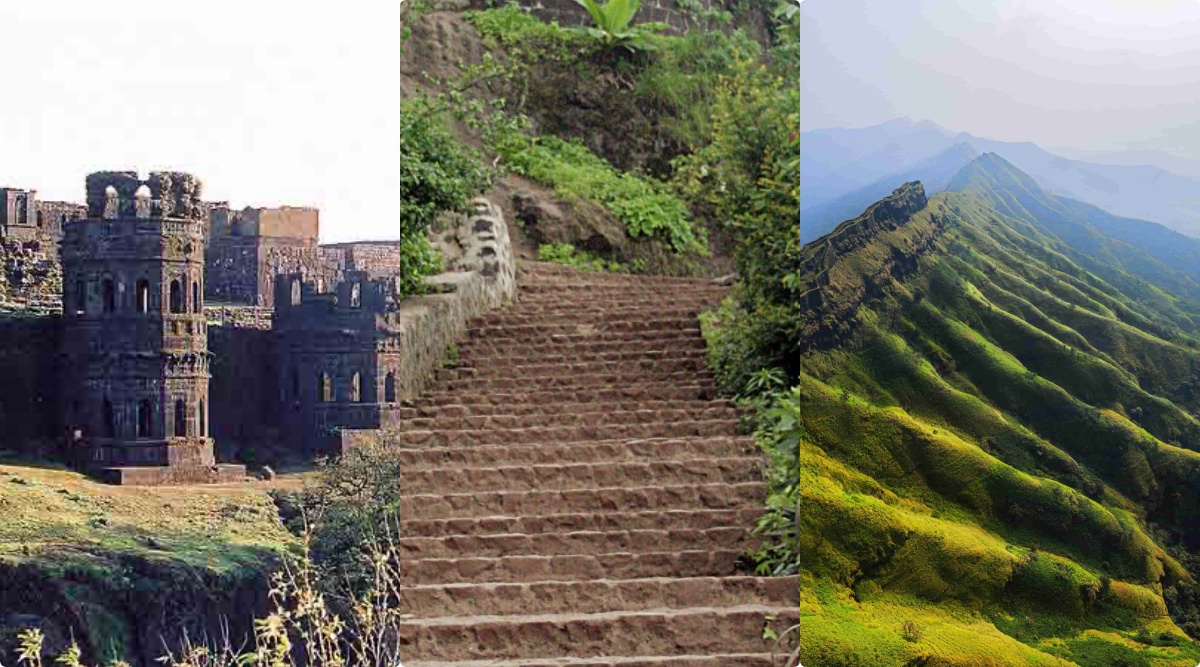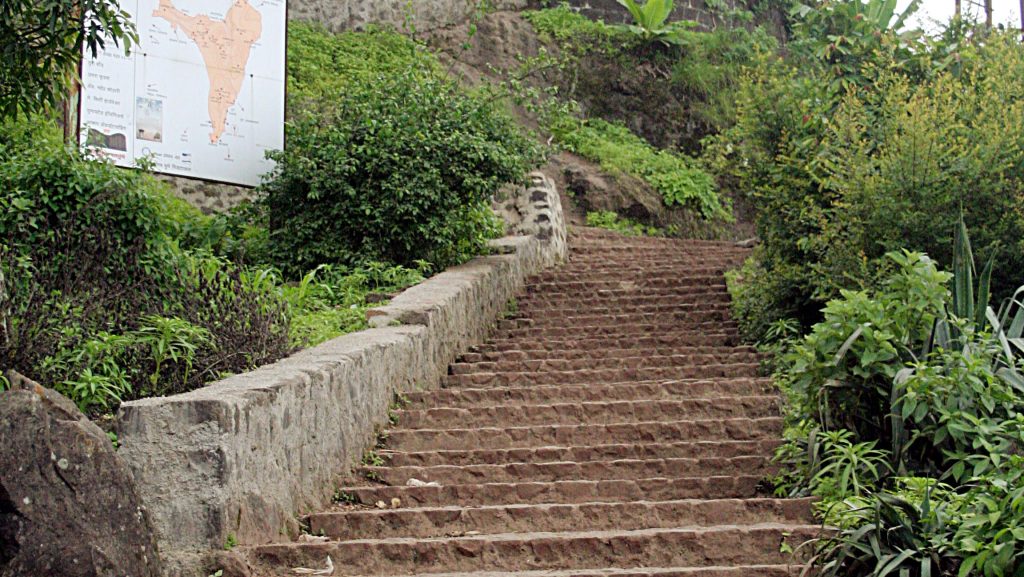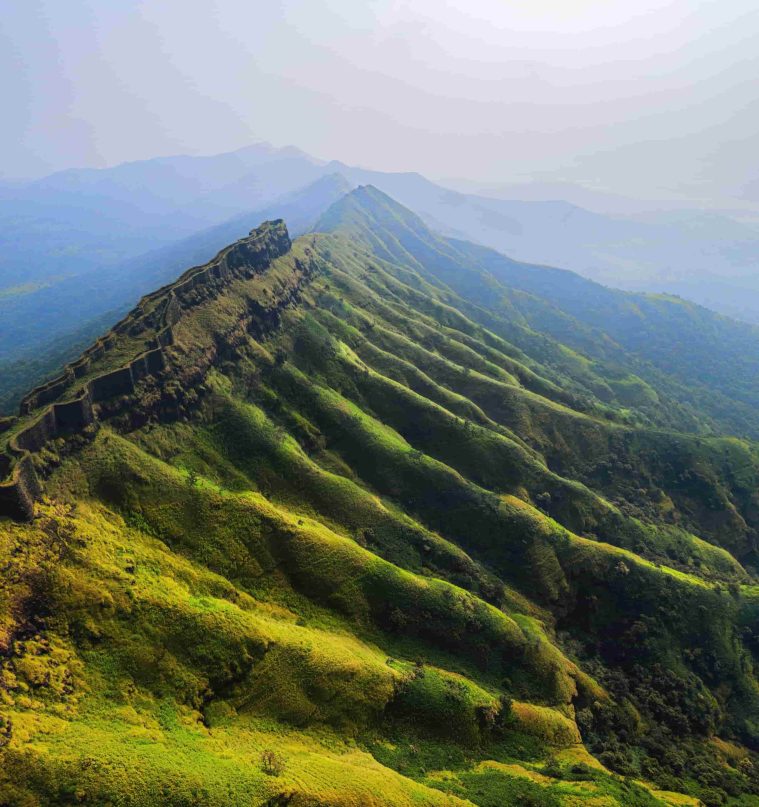 Raigad Fort (Left), Singad (Centre) and Torna (Right) (Source: https://www.maharashtratourism.gov.in/)
Raigad Fort (Left), Singad (Centre) and Torna (Right) (Source: https://www.maharashtratourism.gov.in/)Pune, the seat of power for many dynasties in the Deccan, is also the centre of forts built during different reigns to protect the city from invaders. As winter sets, all trekkers in the city are preparing to take a hike to their favourite fort in the lush Sahyadris. Let’s have a look at the top five forts you can visit this weekend:
1) Sinhagad: With a steaming cup of tea in one hand and some hot ‘Kanda bhajji’ on the side, you can admire the lush green valleys of the Sahyadris as the veil of fog slowly gets lifted. This is the ideal weekend any person in Pune can spend at the Sinhagad. Sinhagad, earlier known as ‘Kondhana’ is the most popular fort in Pune. It is named after the valorous Tanaji Malusare, Chhatrapati Shivaji Maharaj’s trusted and brave general who led a battle here against the Mughal army. In his resolve to win the fort, Tanaji had to unfortunately lose his life, thus giving the fort its name ‘Sinhagad’ (‘Sinha’ means lion in Marathi).
 In his resolve to win the fort, Tanaji had to unfortunately lose his life, thus giving the fort its name ‘Sinhagad’ (Source: Maharashtra Tourism website)
In his resolve to win the fort, Tanaji had to unfortunately lose his life, thus giving the fort its name ‘Sinhagad’ (Source: Maharashtra Tourism website) Distance: 32 km from Swargate bus stop
2) Rajgad: Rajgad literally translates to the ‘Fort of the King’ (‘Gad’ means fort and ‘Raj’ king). It is divided in two parts: the lower fort and the upper fort. Established by Chhatrapati Shivaji Maharaj, it was the seat of Maratha power for 24 years. It has 3 ‘machis’ (the slope adjacent to defence walls of any fort) – Padmavati, Suvela, Sanjeevani – and a citadel called ‘Balekilla’. It has a reservoir named after goddess Padmavati and the remains today can still help one imagine the original outline of the fort when built ages ago.
 Established by Chhatrapati Shivaji Maharaj, Raigad Fort was the seat of Maratha power for 24 years. (Source: Maharashtra Tourism website)
Established by Chhatrapati Shivaji Maharaj, Raigad Fort was the seat of Maratha power for 24 years. (Source: Maharashtra Tourism website) Distance: 54 km from Swargate bus stop
3) Torna: A mere 12 kilometres away from Rajgad, Torna fort is also known as Prachandagad because of its huge proportions according to some historians. This fort laid the foundation of the Maratha empire and exchanged multiple hands from Malik Ahmed, a Bahmani ruler, to Adilshah to Chhatrapati Shivaji Maharaj and finally to Aurangzeb until it was conquered again by Nagoji Kokate, a Maratha general. The temples of Mengai, Toranjai, Budhla Machi and Zunjar Machi are the points of attraction of this fort.
 The temples of Mengai, Toranjai, Budhla Machi and Zunjar Machi are the points of attraction of the Torna fort. (Source: Maharashtra Tourism)
The temples of Mengai, Toranjai, Budhla Machi and Zunjar Machi are the points of attraction of the Torna fort. (Source: Maharashtra Tourism)
Distance: 64 km from Swargate bus stop
4) Lohagad Visapur: Believed to be built around 600 years ago, it was under the control of Malik Nizam Shah who founded Nizamshahi dynasty before getting annexed by the Bahmani Sultanate and ultimately transferred in the hands of Chhatrapati Shivaji Maharaj. The Peshwas controlled it for a brief period of time till it was taken over by the British in 1818. The fort has multiple gateways which remain to be in a good condition, offering some clues on the layout of the fort when it was built. The main attraction continues to be the ‘Bawantaki’, a water reservoir atop the fort.
Distance: 67 km from Swargate bus stop
5) Purandar: The history of this fort can take one back to the Yadava period. It has a twin fort called Varajagad, which is smaller in size and serves the purpose of protection. It also houses a complex called ‘Balekilla’ believed to be the residence of the nobles. This fort has stood the test of time as it was under the control of the Baridshahi, Nizamshahi, Marathas, Mughals and British. Purandareshwar temple is a tourist attraction on the fort premises and it also has a statue remembering the bravery of Murarbaji Deshpande, a general in the Maratha empire during the reign of Shivaji.
Distance: 50 km from Swargate bus stop